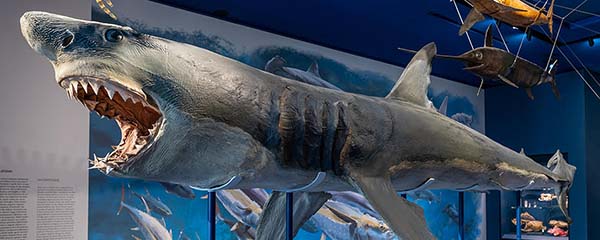
The University Museum of Zoology Collection is a historically valuable result of adventurous expeditions, donations, and research.
The museum collection aims to educate young people on the increasing risk to biodiversity created by human activity.
Zoological finds need constant maintenance and attention to prevent deterioration. The Museum of Zoology conserves each artifact by preventing corrosion and ensuring its preservation for future generations
The Museum of Zoology needs your help.
Support the conservation of the Museum of Zoology’s marine specimen collection. DONATE NOW!
Learn more about the University’s zoological marine specimens.
The University of Padua Zoology Collection includes various fish species and a white shark caught off the Italian waters of the Adriatic Sea in 1823. The particular species of this shark is amongst the largest predatory fish in existence, with females reaching up to 5 meters in length. The white female shark specimen, noted due to the absence of male clasper organs, on display at the Museum of Zoology extends to 4.8 meters in length. White sharks prefer deep waters for hunting, and while we do not associate the Adriatic Sea and Italian beaches as areas frequented by such fearsome predators, sharks find their way to our waters.

The Museum of Zoology collection includes two swordfish, one male and one female, found in the Adriatic Sea and commissioned by the then Director of the Gabinetto di Storia Naturale della Regia Università, Professor Stefano Andrea Renier (1759-1830).
Temporary restorations took place for the shark and one of the swordfish in the early 2000s. The second swordfish remains in storage, its delicate body naturally decaying. Sharks are cartilaginous fish and are particularly sensitive to hygrometric parameters. The University plans to provide the museum with a temperature-controlled display case as the skin of its female shark continues to crack.
These are only a few examples of the University Zoology collection. Help us restore and preserve as many collected species as possible!


